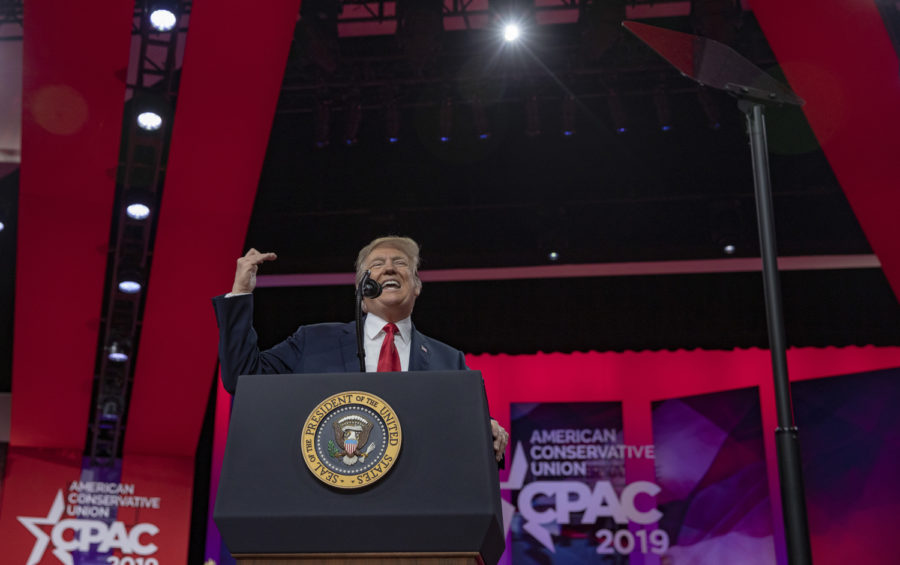Editorial: Executive order for free speech would do more harm than good
U.S. President Donald Trump speaks during Conservative Political Action Conference 2019 on March 2 in National Harbor, Maryland. The American Conservative Union hosts the annual CPAC to discuss conservative agendas.
March 3, 2019
Following a week of political blows in the form of Michael Cohen’s testimony to Congress and a failed meeting in North Korea, President Donald Trump took to the stage Saturday at the Conservative Political Action Conference. He spoke to the annual gathering of conservatives for more than two hours, in an expletive-laden, unscripted rant that touched on a variety of topics, from China’s tariff rates to the Green New Deal.
He also spent time talking about college journalism, going so far as to promise an executive order that would make federal funding for university and college research dependent on their support for free speech. The executive order is yet another swing and a miss for the Trump administration, as it manages to both fundamentally misunderstand the role of the Constitution and propose a problematic solution.
“If they want our dollars, and we give it to them by the billions, they’ve got to allow people like Hayden and many great young people, and old people, to speak,” Trump said, referencing Hayden Williams, a guest he brought on stage. Williams is a conservative activist who was assaulted in February at the University at California at Berkeley while helping students recruit new members. The person who assaulted him, who is not a student at UC Berkeley, was arrested on suspicion of assault with a deadly weapon.
The exact definition of free speech has long been debated on college campuses, with universities often facing accusations of censorship from students, faculty and outside individuals across the political spectrum. But the executive order, which may or may not have been drafted yet, was immediately met with criticism from a variety of sources connected to higher education.
“This is a solution in search of a problem that will create its own problems,” Terry W. Hartle, senior vice president for the American Council on Education, told The Washington Post. “Free speech is a core value for research universities because it’s tied up with academic freedom. Controversies do arise, but they tend to be relatively infrequent.”
The problems that the executive order could create are related to the First Amendment, which already guarantees freedom of speech on college campuses.
“Somebody would have to decide which universities were not supporting free speech on campus,” Catherine Ross, professor in constitutional law at George Washington University, said. “Some group of Washington civil servants — or maybe even worse, political appointees — would be looking at charges of speech discrimination at various colleges and universities, and labeling them as either acceptable in terms of free speech or not acceptable. And that … is a government interference in speech.”
In attempting to promote free speech, the proposed executive order would do exactly the opposite, leaving it up to the executive branch of the federal government to decide what should be considered “free speech,” — something typically left to the courts.
There really is a serious threat to freedom of speech on college campuses these days. In early February, student tour guides at Baylor University apparently removed copies of the Baylor Lariat, the university newspaper, from newsstands. The front-page story of the removed issue was “Fifth alleged rape reported.”
The university said in a statement that the incident was a result of a “miscommunication.” Whether or not this is true, it seems like an attempt at censorship that Trump’s executive order won’t solve.
Trump has never had a good relationship with the media or spoken highly of the press. His executive order is just another way of attacking the press under the guise of promoting free speech.








